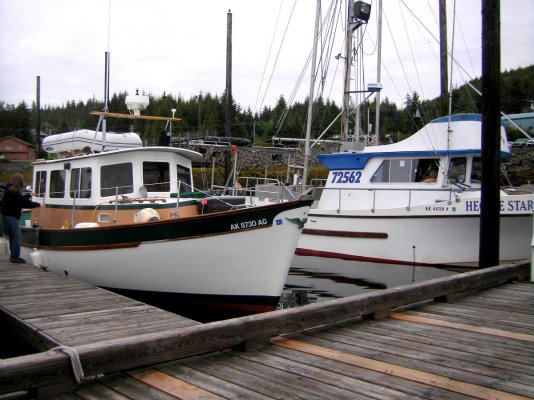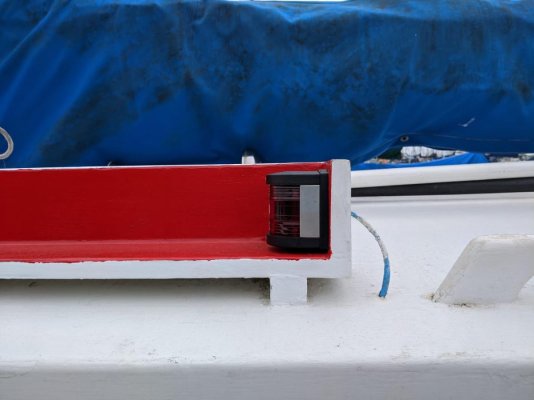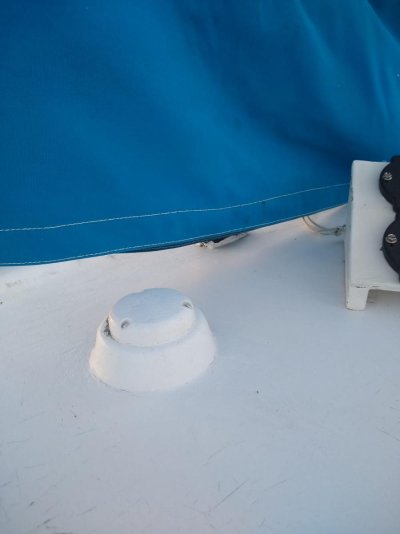Here is an idea for you, one that I have used on occasion.
I like to use PVC pipe as a conduit thru the deck. PVC glues well, can be cut using a wood saw, doesn't expand and contract much, and is available. And bigger is better, because there will always be more wires than you think.
Choose your pipe size, then find a hole saw that is slightly bigger, (it is a good idea to leave room for the 4000 UV). Lightly sanding the outside of the pipe will give the 4000 a very good bonding surface.
Once your hole is drilled, and you know the PVC fits easily, coat all newly exposed surfaces with penetrating epoxy. The measure the depth of the hole, then cut your PVC an inch or better longer than the thickness of the deck so you will have plenty sticking up above the deck line. This keeps casual water out. You can also construct an elbow as mentioned by others in which case you may want your pipe more than an inch above deck level. You don't necessarily have to glue these joints as it may be an advantage to be able to remove the elbow while threading more wires.
Make sure to bevel any inner edges to lessen chafe where wires enter and exit.
This method has never failed me.
I would never ever glue a wire in place. This may make a hard stress point in the wire and is hard to service, change or repair. That method would be a red flag if I were inspecting a boat.
Dan




